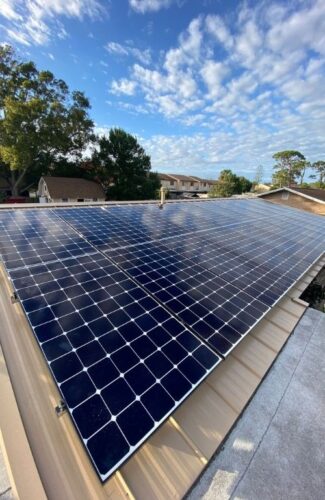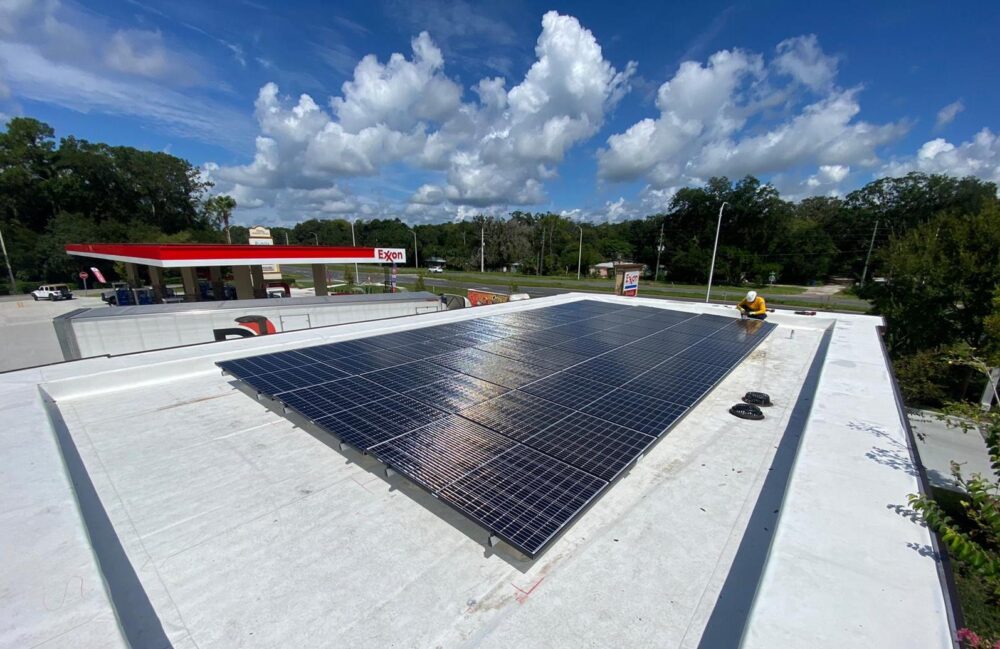SunLight Solar started in 2003 as a residential installer, but has now expanded to also serve commercial clients from its headquarters in Orlando, Florida. Although the company is growing and now installing solar from the Florida Panhandle to Key West, supply chain constraints and interconnection headaches are holding up faster progress.
In this episode of the Contractor’s Corner podcast, SunLight’s project manager Nick Geth tells SPW how the company is navigating Florida’s solar-resistant utilities, as well as what new products might help his team sell more systems.
An edited portion of the interview is below, but be sure to listen to the full podcast for more insight about meeting consumer demand in a time of supply chain disruptions.
Find the Contractor’s Corner podcast on your favorite podcast app. Thank you to this month’s sponsors, Scanifly and CompanyCam.
 With CompanyCam, every photo and video your workers take at a job is automatically organized by location and instantly synced from the field to wherever you are.
With CompanyCam, every photo and video your workers take at a job is automatically organized by location and instantly synced from the field to wherever you are.

Scanifly is the only drone-based solar software focused on automating the survey and design stages of your solar project’s life.
SPW: Tell me about your role at SunLight Solar.
Nick Geth: We’ve grown over the last couple years, doing essentially a baseline of around 200 projects from beginning to close and now we’re well above the 700-mark. I’m doing quite a bit of commercial too.
Right now, I am doing a lot of the interconnection side, making sure that things are progressing from the contract, essentially past the design point, from the processors that work in the building [department], and making sure that things are good to go.
 There’s been a lot in the news lately of these interconnection queues being so backed up.
There’s been a lot in the news lately of these interconnection queues being so backed up.
I’ve actually spoken with one of the supervisors of the interconnection process for FP&L. They essentially only had three specialists throughout the entire state of Florida, and they have just retired one of them, so you have two people running everything from mid-Florida all the way down to South Miami. It’s too much.
When I spoke to her on the phone, she got to the point where she just wanted to cry. That’s where she was at. She was just demoralized with the whole thing. She essentially said, “Please don’t call me anymore if you can avoid it. Just send me an email and we will try to help as best we can.”
My GM was in pure panic. We have things that we have to process and get moving and you have these customers that want to make sure things are getting filled, which doesn’t always happen.
That seems like an area that really needs to be looked at from like a policy standpoint — they need more money to help everyone else.
And they have it. They definitely have the money to do it, it’s just not everyone wants to do it.
What else is preventing you from installing more projects?
The biggest thing that we have right now is the supplying issue. I’m constantly on the phone with one of the CED [Greentech] account managers [and] Soligent, talking to all these different reps trying to get an understanding of what’s in supply and what’s not. It’s having a consumer that’s actually coming in and says, “Hey, I want this, I’d like to move forward,” and then you give a call and try to get [certain products], and it’s just unavailable. It holds things up, it doesn’t stop [the project], but it puts a barrier in between finalizing something that should have been done.
And then obviously the interconnection issues you talked about before probably don’t help.
Yeah, they don’t help. I don’t want to beat utility companies up, but a lot of these companies out there…they’re at this point where they’ll do anything to hold up a project. That just lines the road with all sorts of difficulties trying to make the consumer happy, and they’re not only a client of ours, but they’re also a client of the utility company themselves. And [utilities] don’t see it that way, so it’s tough.
What are some future product trends you’re looking forward to?
For us, it’s the [Enphase] IQ8s that are going to be coming out pretty soon for the microinverters. I like them, because we do deal with batteries, but at the same time, it not only makes the panel wattage allowed to be more accessible, but it also makes it to where we have this efficiency of being able to power the home during daylight hours, essentially without a battery.






Tell Us What You Think!